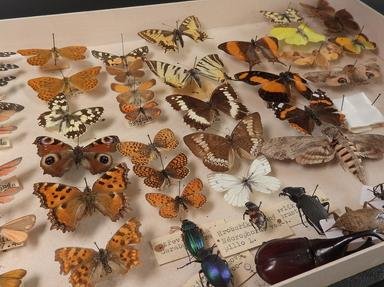Quiz Answer Key and Fun Facts
1. There are more than 2,000 species of the family Cicadidae, and cicadas are represented in every continent of the world except Antarctica. Cicadas with a seventeen-year life cycle are a little rarer. Where can these species of Magicicada be found?
2. Apart from their longer lifespan, do seventeen-year cicadas behave differently from annual cicadas?
3. In the insect world, seventeen years is an extraordinarily long lifespan. Where do cicadas spend the majority of their lives?
4. Near the end of their lifespans -- just before their final molt -- periodical cicadas emerge, en masse, nearly simultaneously. Millions of insects appear over the course of a few days and dominate the outdoors until their disappearance several weeks later; their descendants will emerge seventeen years later. What is the name given to a synchronized cicada population?
5. In the final step before a cicada becomes an adult, it must molt, leaving a golden-brown exoskeleton behind. What color is a newly-molted cicada?
6. There is only one thing on the minds of newly minted adult cicadas: the opposite sex. Male cicadas make loud chirping noises to attract the ladies; in fact, when a chorus of male cicadas is chirping together, the noise has been measured at 100 decibels! How do male cicadas chirp?
7. When two cicadas have successfully paired off, the male dies happy (or at least, we assume so) and the female sticks around long enough to lay up to 600 eggs. Where does she deposit these future cicadas?
8. In the fullness of time, the cicada eggs hatch. What is the first thing that the newborn nymphs do after emerging?
9. A given population of cicadas will become adults at the same time -- and when a large population comes of age, they are everywhere! Are cicadas dangerous to humans?
10. Three species of the genus Magicicada have seventeen-year life cycles; the other four species have life cycles that last thirteen years. What is the strongest theory as to why Magicicadas evolved to live so long?
Source: Author
CellarDoor
This quiz was reviewed by FunTrivia editor
crisw before going online.
Any errors found in FunTrivia content are routinely corrected through our feedback system.

